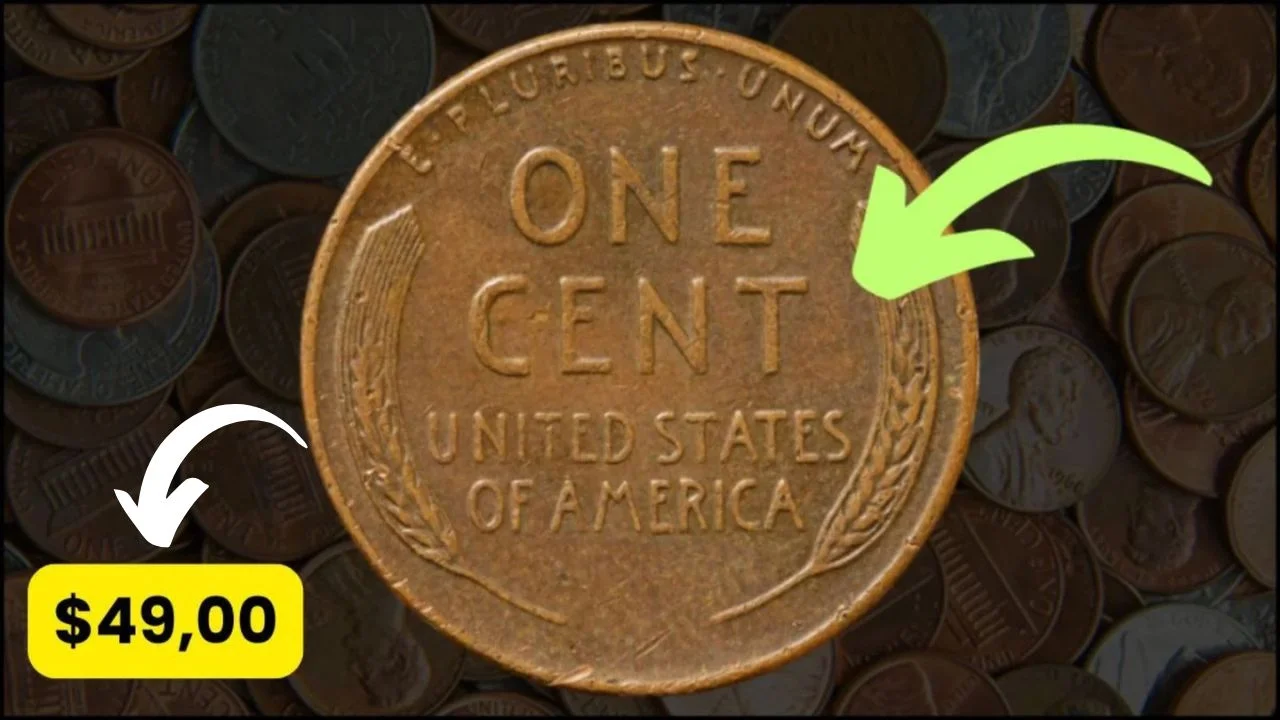Imagine finding a penny worth $49,000 in your spare change! The Lincoln Wheat Penny, a small coin with a big history, has some rare versions that collectors dream about. This blog post dives into the fascinating world of the 1943 copper Lincoln Wheat Penny, why it’s so valuable, and how you might spot one.
What Is the Lincoln Wheat Penny?
The Lincoln Wheat Penny, often called the “Wheat Cent,” is a one-cent coin minted by the U.S. from 1909 to 1958. It features Abraham Lincoln’s profile on the front and two wheat stalks on the back, giving it its iconic name. While most are worth just a cent, rare versions like the 1943 copper penny can fetch thousands.
A Brief History of the Lincoln Wheat Penny
Introduced in 1909 to honor Lincoln’s 100th birthday, the Lincoln Wheat Penny was the first U.S. coin to feature a real person. Designed by Victor David Brenner, its wheat stalk design became a symbol of America’s agricultural roots. The coin was minted until 1958, when the Lincoln Memorial design took over.
During World War II, copper was needed for the war effort, so in 1943, the U.S. Mint switched to zinc-coated steel pennies. However, a few copper blanks were mistakenly used, creating the ultra-rare 1943 copper penny, now a collector’s holy grail.
Why Is the 1943 Copper Penny So Valuable?
The 1943 copper Lincoln Wheat Penny is valuable due to its rarity, historical significance, and collector demand. Only about 20–40 of these coins exist today, making them incredibly scarce. One sold for $1.7 million in 2010, and experts estimate a pristine example could fetch $49,000 or more today.
| Factor | Impact on Value |
|---|---|
| Rarity | Only 20–40 known coins |
| Condition | Mint state coins fetch higher prices |
| Demand | High interest from collectors |
| History | WWII-era minting error |
How to Spot a Rare Lincoln Wheat Penny
Finding a $49,000 penny sounds like a dream, but it’s possible! Here’s how to check your change:
- Check the Date: Look for “1943” on the front.
- Test the Material: Use a magnet. Steel pennies stick; copper ones don’t.
- Inspect the Mint Mark: Look for a “D” (Denver) or “S” (San Francisco) under the date.
- Weigh It: Copper pennies weigh about 3.11 grams; steel ones are 2.7 grams.
If you find a potential match, don’t clean it! Contact a professional coin grader like PCGS or NGC for authentication.
Notable Facts About Valuable Wheat Pennies
Here are some key facts about rare Lincoln Wheat Pennies:
| Year | Mint Mark | Estimated Value | Notable Feature |
|---|---|---|---|
| 1943 | D or S | Up to $49,000+ | Copper error coin |
| 1909 | S VDB | $1,000–$100,000 | Low mintage, designer initials |
| 1914 | D | $10,000+ | Low mintage |
| 1955 | None | $50,000+ | Double die error |
- The 1943 copper penny was a wartime mistake, making it a numismatic legend.
- A 1943 bronze penny was found in a teenager’s lunch money in 1982
- Other rare pennies, like the 1909-S VDB, can also fetch high prices due to low mintages.
Expert Tips for Coin Collectors
Ready to hunt for rare coins? Try these tips:
- Check Your Change: Look at old pennies in jars, bank rolls, or pocket change.
- Visit Coin Shows: Connect with dealers and collectors for rare finds.
- Use a Magnifying Glass: Spot errors like doubled dies or missing mint marks.
- Store Coins Safely: Handle by the edges and use coin holders to preserve value.
- Get Professional Grading: Authenticate rare coins with PCGS or NGC.
Frequently Asked Questions
Q: Can I still find a 1943 copper penny in circulation?
Yes, it’s rare but possible! They’ve been found in change, coin jars, or old collections.
Q: How do I know if my penny is valuable?
Check the date, mint mark, and material. Use a magnet and weigh it. Consult a professional if it seems rare.
Q: Should I clean my old pennies?
Never clean coins! Cleaning can damage them and lower their value significantly.
Conclusion
The Lincoln Wheat Penny, especially the 1943 copper version, is a tiny treasure that could be worth $49,000 or more. Its history, rarity, and the thrill of finding one make coin collecting exciting. Next time you get change, take a closer look—you might just find a piece of history! Share this post with fellow collectors, and start your treasure hunt today!

